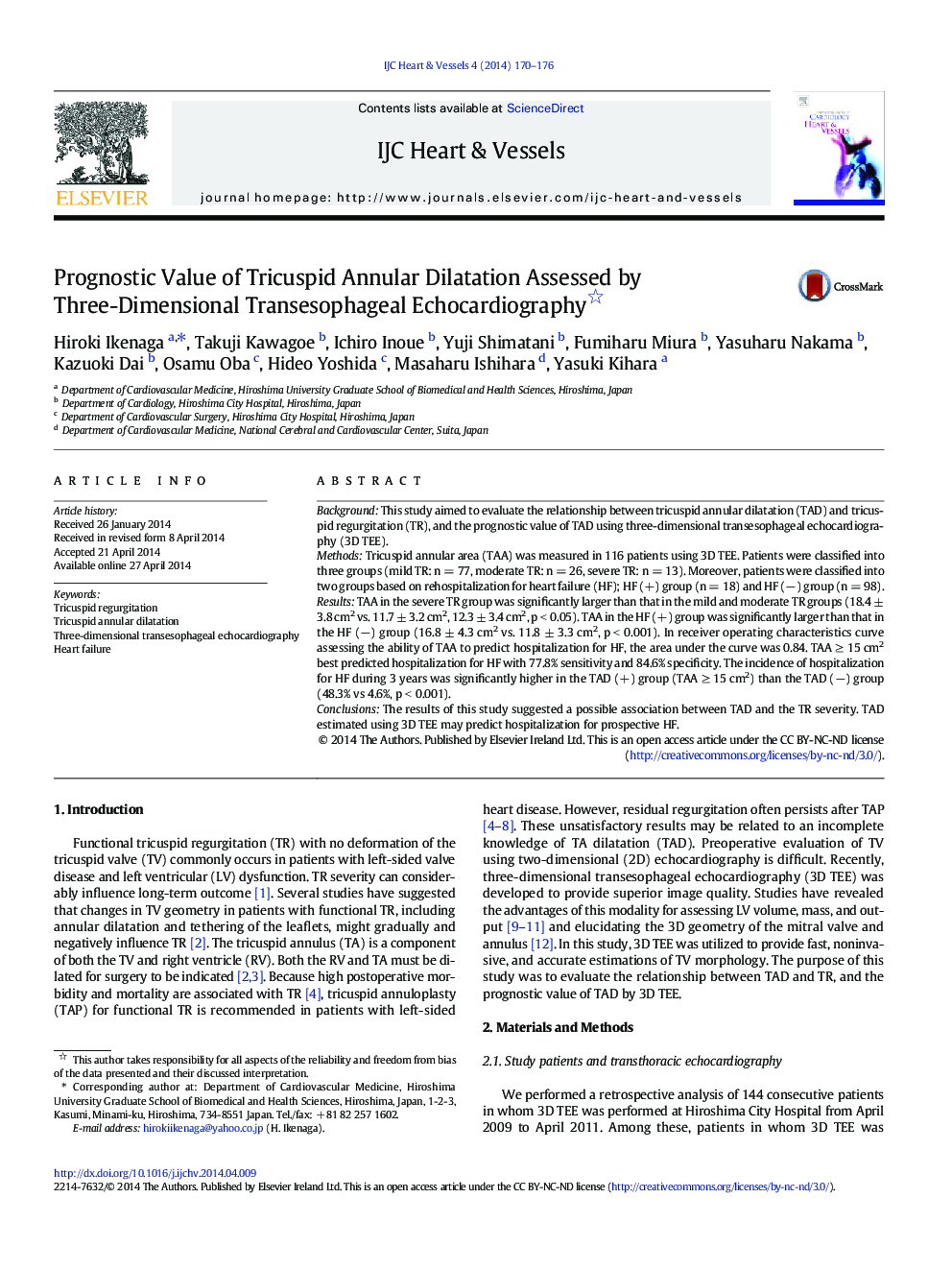| Article ID | Journal | Published Year | Pages | File Type |
|---|---|---|---|---|
| 2927111 | IJC Heart & Vessels | 2014 | 7 Pages |
BackgroundThis study aimed to evaluate the relationship between tricuspid annular dilatation (TAD) and tricuspid regurgitation (TR), and the prognostic value of TAD using three-dimensional transesophageal echocardiography (3D TEE).MethodsTricuspid annular area (TAA) was measured in 116 patients using 3D TEE. Patients were classified into three groups (mild TR: n = 77, moderate TR: n = 26, severe TR: n = 13). Moreover, patients were classified into two groups based on rehospitalization for heart failure (HF); HF (+) group (n = 18) and HF (−) group (n = 98).ResultsTAA in the severe TR group was significantly larger than that in the mild and moderate TR groups (18.4 ± 3.8 cm2 vs. 11.7 ± 3.2 cm2, 12.3 ± 3.4 cm2, p < 0.05). TAA in the HF (+) group was significantly larger than that in the HF (−) group (16.8 ± 4.3 cm2 vs. 11.8 ± 3.3 cm2, p < 0.001). In receiver operating characteristics curve assessing the ability of TAA to predict hospitalization for HF, the area under the curve was 0.84. TAA ≥ 15 cm2 best predicted hospitalization for HF with 77.8% sensitivity and 84.6% specificity. The incidence of hospitalization for HF during 3 years was significantly higher in the TAD (+) group (TAA ≥ 15 cm2) than the TAD (−) group (48.3% vs 4.6%, p < 0.001).ConclusionsThe results of this study suggested a possible association between TAD and the TR severity. TAD estimated using 3D TEE may predict hospitalization for prospective HF.
